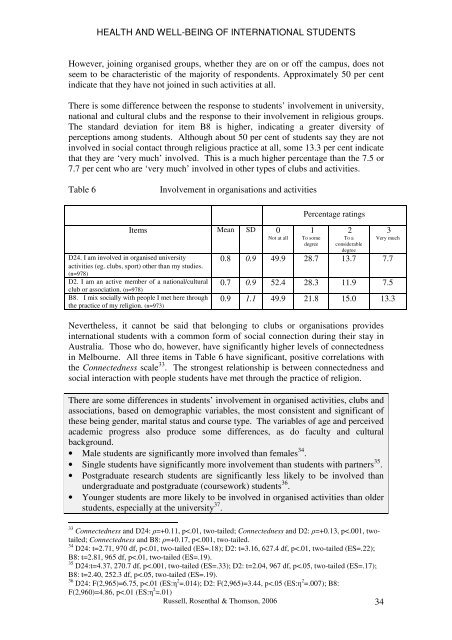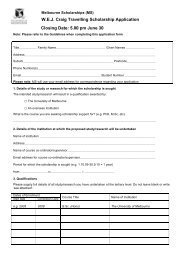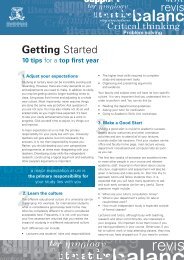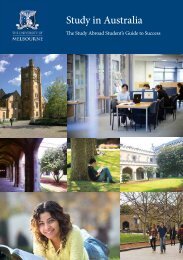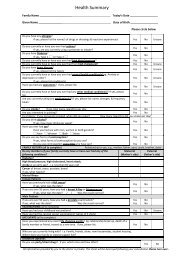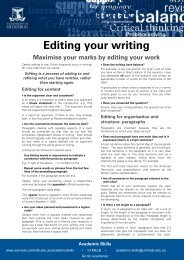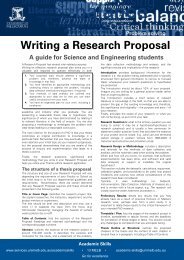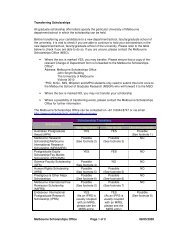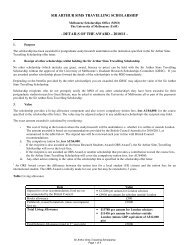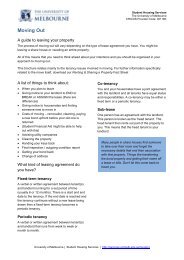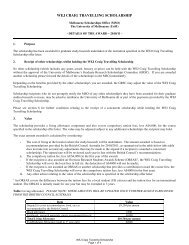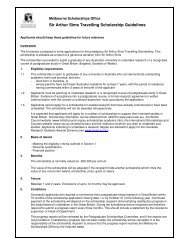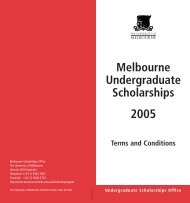a growing experience - Student Services - University of Melbourne
a growing experience - Student Services - University of Melbourne
a growing experience - Student Services - University of Melbourne
You also want an ePaper? Increase the reach of your titles
YUMPU automatically turns print PDFs into web optimized ePapers that Google loves.
HEALTH AND WELL-BEING OF INTERNATIONAL STUDENTSHowever, joining organised groups, whether they are on or <strong>of</strong>f the campus, does notseem to be characteristic <strong>of</strong> the majority <strong>of</strong> respondents. Approximately 50 per centindicate that they have not joined in such activities at all.There is some difference between the response to students’ involvement in university,national and cultural clubs and the response to their involvement in religious groups.The standard deviation for item B8 is higher, indicating a greater diversity <strong>of</strong>perceptions among students. Although about 50 per cent <strong>of</strong> students say they are notinvolved in social contact through religious practice at all, some 13.3 per cent indicatethat they are ‘very much’ involved. This is a much higher percentage than the 7.5 or7.7 per cent who are ‘very much’ involved in other types <strong>of</strong> clubs and activities.Table 6Involvement in organisations and activitiesItems Mean SD 0Not at allD24. I am involved in organised universityactivities (eg. clubs, sport) other than my studies.(n=978)D2. I am an active member <strong>of</strong> a national/culturalclub or association. (n=978)B8. I mix socially with people I met here throughthe practice <strong>of</strong> my religion. (n=973)Percentage ratings1To somedegree2To aconsiderabledegree3Very much0.8 0.9 49.9 28.7 13.7 7.70.7 0.9 52.4 28.3 11.9 7.50.9 1.1 49.9 21.8 15.0 13.3Nevertheless, it cannot be said that belonging to clubs or organisations providesinternational students with a common form <strong>of</strong> social connection during their stay inAustralia. Those who do, however, have significantly higher levels <strong>of</strong> connectednessin <strong>Melbourne</strong>. All three items in Table 6 have significant, positive correlations withthe Connectedness scale 33 . The strongest relationship is between connectedness andsocial interaction with people students have met through the practice <strong>of</strong> religion.There are some differences in students’ involvement in organised activities, clubs andassociations, based on demographic variables, the most consistent and significant <strong>of</strong>these being gender, marital status and course type. The variables <strong>of</strong> age and perceivedacademic progress also produce some differences, as do faculty and culturalbackground.• Male students are significantly more involved than females 34 .• Single students have significantly more involvement than students with partners 35 .• Postgraduate research students are significantly less likely to be involved thanundergraduate and postgraduate (coursework) students 36 .• Younger students are more likely to be involved in organised activities than olderstudents, especially at the university 37 .33 Connectedness and D24: =+0.11, p


